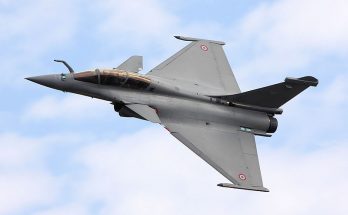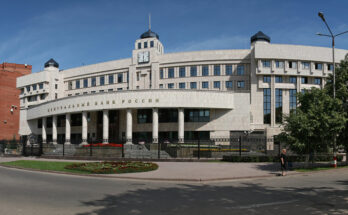The Swedish government has put forth a budget bill for fiscal year 2024 (FY24) that will drive defense spending up by 30 percent year-on-year and push the country towards the 2 percent of GDP expenditure target of the NATO Alliance.
The statement released by Swedish Defense Minister Pål Jonson on September 11 noted that the country faces its most grave security situation since the end of the Second World War.
Sweden’s government opted to move forward with an application to join NATO on May 18, 2022 – the same day in which neighboring ally Finland submitted its own application to the Alliance.
While Finland’s bid was approved by all member nations and Helsinki formally entered the alliance as its 31st member on April 4 of this year, Sweden’s approval process has been held up by Hungary and Turkey, with the latter throwing up multiple roadblocks while a parliamentary vote on the matter in Ankara looms in October.
Despite the final hurdles involved, Sweden has opted to push ahead with a demonstration of its value and commitment to the alliance by raising its defense expenditure levels up to the minimum requisite NATO standard. After steadily lifting its defense budget since 2018, the figure set aside for FY24 – SEK119.095 billion ($10.73 billion) – will be nearly a full third higher than that earmarked for this year (SEK91.586 billion, or $8.25 billion).
Future increases of SEK1.2 billion ($108 million) and SEK7.4 billion ($664 million) are outlined for 2025 and 2026, respectively, in the latest government budget bill. The former will likely be revised up higher depending upon the situation in Ukraine and Sweden’s economic/fiscal outlook heading into the fall of next year.
More importantly, the larger allocation proposed for FY24 will bring Sweden in line with NATO standards in a year in which the government hopes to finally become a permanent member of the alliance.
Sweden’s approach towards defense would – if viewed on an economics basis over the past 40 years – look like a U-shaped curve. The downward and then upward slopes reflect the differing stages and views on security experienced by Sweden over the 30-plus-year period from the end of the Cold War to today.
Over the 44-year period of the Cold War, Sweden – as a militarily non-aligned nation perched across the Baltic Sea from the Soviet Union – had to maintain a large, well-equipped standing force capable of preserving its territorial integrity and national sovereignty.
During this era, Sweden had one of the strongest military forces in Europe, featuring one of the most advanced air forces in the world, a well-equipped and active naval arm, an army able to mobilize up to 350,000-400,000 men on activation, and artillery installations dotting its coastlines.
At its peak strength, in 1963, Sweden devoted 3.68 percent of GDP toward its defense budget. Even as the end of the Cold War was drawing near in 1988, Sweden still had a defense budget reaching up to 2.6 percent of GDP – and was still lingering at 2.5 percent by 1998, seven years after the former USSR dissolved.
All of this was supported by a domestic defense industry churning out technically advanced weaponry for all service branches.
But with the end of the Cold War, that large military apparatus became an anachronism.
Suddenly finding no direct military threat on the horizon the Swedish government began reducing its armed forces. As a severe credit and financial crisis in the early 1990s pushed the country into recession, the government – amid a bailout of the flailing banking sector – began to scrub its budget for savings.
Sweden’s large, expensive military became a natural target for scrupulous government actuaries.
Over the ensuing decades – particularly from 1999 onwards, the budget ax was swung sharply and repeatedly at defense, bringing Sweden back to the low level of military readiness experienced in the late 1930s/early 1940s. That tipping point followed a two-decade military reduction similar to the one Sweden undertook from the late 1990s through the mid-2010s.
But now Swedish defense focus and investment is on a steady upswing, one that has seen three double-digit spending increases since 2019, with the fourth set to take place next year. (The two fiscal years without double-digit increases – 2020 and 2021 – witnessed year-on-year nominal budgetary rises of 8.5 percent and 9.5 percent, respectively.)
While the first years of increased military investment and force modernization efforts were not undertaken with future NATO membership in mind, the focus now is squarely on fitting inside the alliance.
Sweden’s quest to join NATO represents a massive – and abrupt – change in national outlook.
The shift in attitudes towards NATO membership by ordinary Swedes may resulted from Russia launching its invasion of Ukraine on February 24, 2022, but the changes – however slight at first – by the government in its revitalized approach to defense and security began earlier.
Following Russia’s takeover of Ukraine’s Crimean Peninsula in 2014 – coupled with undetermined submarine intrusions in the Stockholm archipelago in October 2014 that stoked remembrances in Sweden of the infamous October 1981 “Whiskey on the Rocks” incident near the Swedish naval base in Karlskrona – the government began to slowly increase defense investment.
Other noteworthy steps – such as re-militarizing the strategic island of Gotland, having the Civil Contingency Agency begin notifying local authorities across the country that operations centers in underground bunkers should be maintained and a system of emergency sirens put into place, and reintroducing conscription – all followed.
The former minority government led by Stefan Lofven – supported by two major opposition parties – then announced a 50 percent increase in Swedish military personnel under its Total Defense 2021-2025 bill.
Hence, by the time Russia launched its invasion of Ukraine the wheels of Sweden’s rearmament were already in motion.
Now for the discernible future there appears to be no turning back. Whether through collective defense or alone, Sweden’s government is aware it can no longer afford a holiday from history.
Dan Darling is Forecast International’s director of military and defense markets. In this role, Dan oversees a team of analysts tasked with covering everything from budgeting to weapons systems to defense electronics and military aerospace. Additionally, for over 17 years Dan has, at various times, authored the International Military Markets reports for Europe, Eurasia, the Middle East and the Asia-Pacific region.
Dan's work has been cited in Defense News, Real Clear Defense, Asian Military Review, Al Jazeera, and Financial Express, among others, and he has also contributed commentary to The Diplomat, The National Interest and World Politics Review. He has been quoted in Arabian Business, the Financial Times, Flight International, The New York Times, Bloomberg and National Defense Magazine.
In addition, Dan has made guest appearances on the online radio show Midrats and on The Media Line, as well as The Red Line Podcast, plus media appearances on France 24 and World Is One News (WION).




